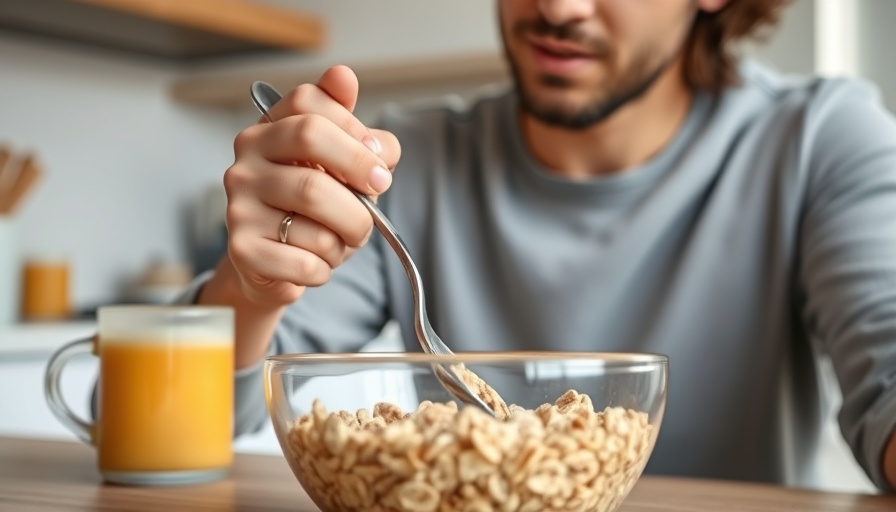
Understanding Satiety and Its Importance
Satiety—the feeling of fullness after eating—plays a crucial role in weight management and overall health. Imagine living with a condition such as Prader-Willi syndrome, where individuals struggle with impaired signaling between their digestive system and their brain, leading them to feel no sensation of fullness. This inability can result in dangerous overeating, serving as a devastating reminder of how essential our body's hunger cues are for maintaining balance.
Debunking the Myth of Protein as the Most Satiating Macronutrient
Common belief holds that protein is the king of satiety, but is it true? Research suggests that while many find protein-rich meals satiating initially, this effect doesn’t necessarily lead to reduced calorie intake later on. A review funded by food industries shows that hours after eating protein, people often do not consume fewer calories later. In contrast, fiber, found predominantly in fruits, vegetables, and whole grains, has shown impressive capabilities to suppress appetite well beyond the meal. Foods high in fiber promote a feeling of fullness that can lead to reduced food intake, even the following day.
How Fiber Alters Satiety Signals
The journey of food through our digestive system significantly impacts how we perceive fullness. Fiber-rich foods take longer to digest, sending signals of satiety that travel far down the digestive tract, helping to signal to our brain that it is full. In studies, participants experienced reduced hunger and caloric intake when fiber was included in their meals. This raises an important point: If most of one’s meals are low in fiber, it’s no wonder many feel perpetually hungry. As food is absorbed quickly, the brain never receives the confirmation that the digestive tract is satisfied.
Gluttony: An Instinct Shaped by Evolution
As humans, we are biologically wired for gluttony, an instinct honed over millions of years. Our ancestors thrived by consuming as much as possible in times of abundance to prepare for future scarcity. This drive makes it crucial to consider not just what we eat, but how our diets reflect our biological adaptations. Foods that are low in fiber often fail to engage this evolutionary mechanism, leading many to eat beyond their needs.
Exploring the Impact of Diet on Weight Loss
Studies reveal intriguing results on dietary intervention. For instance, participants who removed pleasurable elements from their diet—eating bland, low-calorie foods—did not feel deprived. Interestingly, lean individuals maintained their calorie intake, but those who were obese consumed far fewer calories almost effortlessly. This dichotomy speaks volumes about our appetitive control systems: the homeostatic pathway versus the hedonic pathway. The former regulates hunger based on energy reserves, while the latter is influenced by the reward properties of food.
The Complexity of Our Appetite Control Systems
Appetite control is a nuanced field, revealing that satiety doesn’t solely rely on the physical fullness of food. It’s a combination of physiological and psychological factors. Understanding how these two systems interact is critical in comprehending why some individuals overeat while others are more in tune with their hunger cues. With knowledge of these mechanisms, we are better positioned to make informed dietary choices and potentially alter our eating behaviors for a healthier lifestyle.
Practical Steps to Enhance Your Diet
To optimize satiety and overall nutrition, incorporating fiber-rich foods into meals is vital. Foods like fruits, vegetables, legumes, and whole grains not only improve digestion but foster a sense of fullness that can help regulate calorie intake. For instance, adding fiber-rich foods such as oats and beans into your meal planning can yield significant benefits. Those looking to enhance their wellness journey should consider these simple changes to instill healthier eating patterns.
In conclusion, understanding the mechanics of satiety and the factors influencing our appetite can lead to better dietary choices and better health outcomes. Exploring nutrition information, from the benefits of avocados to the surprising facts about protein, equips us with the knowledge to take control of our health proactively.
 Add Row
Add Row  Add
Add 




Write A Comment